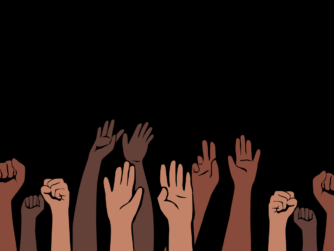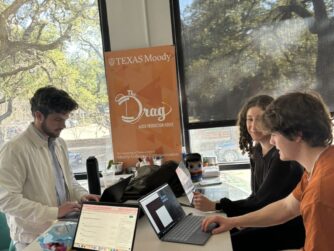Why does Black Austin matter? Well, two UT Austin professors, Dr. Lisa Thompson and Dr. Richard Reddick, decided to band together to build a podcast that seeks to share stories of the local Black community and lets the guest guide the conversation through a wide range of topics from recommending Austin gems to discussing their jobs. ‘Black Austin Matters’ is worth checking out to get a scope of the lives of outstanding Black Austinities and how they continue to make our community excel.
Why did you both create “Black Austin Matters?”
It was a wonderful exemplar of how we work together. Rich had the idea for a discussion about “why does Black Austin matter, and to whom?” spurred by the painting on Congress Avenue in June 2020 and sent his thoughts out via Twitter. Lisa saw the message but waited to see who would respond. At the end of the day, she sent a response yes, we should have a conversation and tagged @KUT in her tweet. That evening, [projects editor] Matt Largey responded and suggested we talk … and that’s how we came up with the idea — through a sustained, continual discussion. Now we have a dialogue with Black Austinites that’s shared with the entire community.
How do you pick a conversation topic for each episode?
We are interested in stories: how Black Austinites navigate life, careers, families, and joy. We center the topic around a Black Austinite, and while we often start with their work and interests, we engage in all aspects of how they see the world and how they live. It’s an organic conversation about what they do to relax, where they like to eat, their favorite music, and what they are passionate about. We’re genuinely looking for a complete conversation. It’s fun to see where our guests take us!
Can you speak more about the erasure of Black Austin that you have observed? What does this mean?
Black Austin is changing and exists in many ways. While some historic communities look quite different today because of gentrification and an increasingly economically stratified housing and labor market, Black Austinites are thriving in different spaces. We are hoping to provide a counternarrative to the stories of loss and absence, and highlight growth, resilience, and resistance.
Why is it important to have these sorts of conversations in a public space? What are the goals?
We have this conversation with our guests and the Black Austin community, but everyone is welcome to listen and learn more about their neighbors. Our lives are dynamic and diverse, and in three dimensions. What we hope to provide are authentic voices and experiences, from names you know, to those you do not — to showcase the mosaic of life in Black Austin.
What is your advice to students who want to get into podcasting?
Find a topic you are passionate about, as well as curious about. Listen to other podcasts and pick up things you like about their style. For us, we’ve been friends for years and we have a great rapport, but there are all sorts of approaches you can take. It also helps to have a production team. We are extremely fortunate to work with seasoned producers Matt Largey and Miles Bloxson. But even if you don’t have professional producers, it helps to have somebody to advise you on what sounds good, and how to ask good questions.
Check out their podcast:








